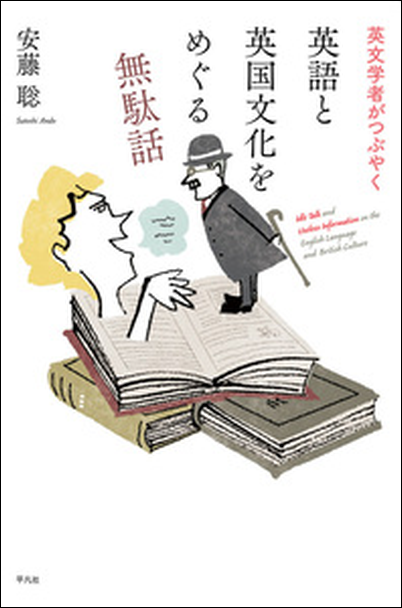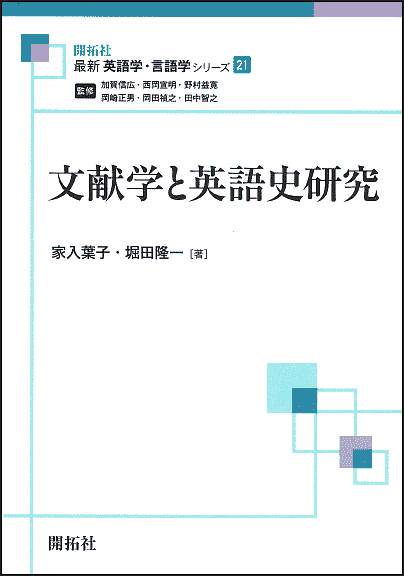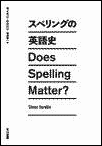2023-09-24 Sun
■ #5263. 10月7日(土),朝カルのシリーズ講座「文字と綴字の英語史」の第3回「中英語の綴字 --- 標準なき繁栄」 [asacul][notice][writing][spelling][orthography][me][standardisation][me_dialect][norman_conquest][link][voicy][heldio]
約2週間後の10月7日(土)の 15:30--18:45 に,朝日カルチャーセンター新宿教室にてシリーズ講座「文字と綴字の英語史」の第3回となる「中英語の綴字 --- 標準なき繁栄」が開講されます.

今回の講座は,全4回のシリーズの第3回となります.シリーズのラインナップは以下の通りです.
・ 第1回 文字の起源と発達 --- アルファベットの拡がり(春・4月29日)
・ 第2回 古英語の綴字 --- ローマ字の手なずけ(夏・7月29日)
・ 第3回 中英語の綴字 --- 標準なき繁栄(秋・10月7日)
・ 第4回 近代英語の綴字 --- 標準化を目指して(冬・未定)
これまでの2回の講座では,まず英語史以前の文字・アルファベットの起源と発達を確認し,次に古英語期(449--1100年)におけるローマ字使用の実際を観察してきました.第3回で注目する時期は中英語期(1100--1500年)です.この時代までに英語話者はローマ字にはすっかり馴染んでいましたが,1066年のノルマン征服の結果,「標準英語」が消失し,単語の正しい綴り方が失われるという,英語史上でもまれな事態が展開していました.やや大げさに言えば,個々の英語の書き手が,思い思いに好きなように単語を綴った時代です.これは秩序崩壊とみればネガティヴとなりますが,自由奔放とみればポジティヴです.はたしてこの状況は,後の英語や英語のスペリングにいかなる影響を与えたのでしょうか.英語スペリング史において,もっともメチャクチャな時代ですが,だからこそおもしろい話題に満ちています.講座のなかでは中英語原文も読みながら,この時代のスペリング事情を眺めてみたいと思います.
講座の参加にご関心のある方は,ぜひこちらのページよりお申し込みください.対面のほかオンラインでの参加も可能です.また,参加登録された方には,後日見逃し配信としてアーカイヴ動画へのリンクも送られる予定です.ご都合のよい方法でご参加ください.全4回のシリーズものではありますが,各回の内容は独立していますので,単発でのご参加も歓迎です.
本シリーズと関連して,以下の hellog 記事,および Voicy heldio 配信回もご参照ください.
[ 第1回 文字の起源と発達 --- アルファベットの拡がり ]
・ heldio 「#668. 朝カル講座の新シリーズ「文字と綴字の英語史」が4月29日より始まります」(2023年3月30日)
・ hellog 「#5088. 朝カル講座の新シリーズ「文字と綴字の英語史」が4月29日より始まります」 ([2023-04-02-1])
・ hellog 「#5119. 朝カル講座の新シリーズ「文字と綴字の英語史」の第1回を終えました」 ([2023-05-03-1])
[ 第2回 古英語の綴字 --- ローマ字の手なずけ ]
・ hellog 「#5194. 7月29日(土),朝カルのシリーズ講座「文字と綴字の英語史」の第2回「古英語の綴字 --- ローマ字の手なずけ」」 ([2023-07-17-1])
・ heldio 「#778. 古英語の文字 --- 7月29日(土)の朝カルのシリーズ講座第2回に向けて」(2023年7月18日)
・ hellog 「#5207. 朝カルのシリーズ講座「文字と綴字の英語史」の第2回「古英語の綴字 --- ローマ字の手なずけ」を終えました」 ([2023-07-30-1])
[ 第3回 中英語の綴字 --- 標準なき繁栄 ](以下,2023/09/26(Tue)の後記)
・ heldio 「#848. 中英語の標準なき綴字 --- 10月7日(土)の朝カルのシリーズ講座第3回に向けて」(2023年9月26日)
2023-07-30 Sun
■ #5207. 朝カルのシリーズ講座「文字と綴字の英語史」の第2回「古英語の綴字 --- ローマ字の手なずけ」を終えました [asacul][writing][grammatology][alphabet][notice][spelling][oe][literature][beowulf][runic][christianity][latin][alliteration][distinctiones][punctuation][standardisation][voicy][heldio]
先日「#5194. 7月29日(土),朝カルのシリーズ講座「文字と綴字の英語史」の第2回「古英語の綴字 --- ローマ字の手なずけ」」 ([2023-07-17-1]) でご案内した通り,昨日,朝日カルチャーセンター新宿教室にてシリーズ講座「文字と綴字の英語史」の第2回となる「古英語の綴字 --- ローマ字の手なずけ」を開講しました.多くの方々に対面あるいはオンラインで参加いただきまして感謝申し上げます.ありがとうございました.
古英語期中に,いかにして英語話者たちがゲルマン民族に伝わっていたルーン文字を捨て,ローマ字を受容したのか.そして,いかにしてローマ字で英語を表記する方法について時間をかけて模索していったのかを議論しました.ローマ字導入の前史,ローマ字の手なずけ,ラテン借用語の綴字,後期古英語期の綴字の標準化 (standardisation) ,古英詩 Beowulf にみられる文字と綴字について,3時間お話ししました.
昨日の回をもって全4回シリーズの前半2回が終了したことになります.次回の第3回は少し先のことになりますが,10月7日(土)の 15:00~18:45 に「中英語の綴字 --- 標準なき繁栄」として開講する予定です.中英語期には,古英語期中に発達してきた綴字習慣が,1066年のノルマン征服によって崩壊するするという劇的な変化が生じました.この大打撃により,その後の英語の綴字はカオス化の道をたどることになります.
講座「文字と綴字の英語史」はシリーズとはいえ,各回は関連しつつも独立した内容となっています.次回以降の回も引き続きよろしくお願いいたします.日時の都合が付かない場合でも,参加申込いただけますと後日アーカイブ動画(1週間限定配信)にアクセスできるようになりますので,そちらの利用もご検討ください.
本シリーズと関連して,以下の hellog 記事をお読みください.
・ hellog 「#5088. 朝カル講座の新シリーズ「文字と綴字の英語史」が4月29日より始まります」 ([2023-04-02-1])
・ hellog 「#5194. 7月29日(土),朝カルのシリーズ講座「文字と綴字の英語史」の第2回「古英語の綴字 --- ローマ字の手なずけ」」 ([2023-07-17-1])
同様に,シリーズと関連づけた Voicy heldio 配信回もお聴きいただければと.
・ heldio 「#668. 朝カル講座の新シリーズ「文字と綴字の英語史」が4月29日より始まります」(2023年3月30日)
・ heldio 「#778. 古英語の文字 --- 7月29日(土)の朝カルのシリーズ講座第2回に向けて」(2023年7月18日)
2023-07-17 Mon
■ #5194. 7月29日(土),朝カルのシリーズ講座「文字と綴字の英語史」の第2回「古英語の綴字 --- ローマ字の手なずけ」 [asacul][notice][writing][spelling][orthography][oe][link][voicy][heldio]
来週末7月29日(土)の 15:30--18:45 に,朝日カルチャーセンター新宿教室にてシリーズ講座「文字と綴字の英語史」の第2回となる「古英語の綴字 --- ローマ字の手なずけ」が開講されます.
シリーズ初回は「文字の起源と発達 --- アルファベットの拡がり」と題して3ヶ月前の4月29日(土)に開講しました.それを受けて第2回は,ローマ字が英語に入ってきて本格的に用いられ始めた古英語期に焦点を当てます.古英語話者たちは,ローマ字をいかにして受容し,格闘しながらも自らの道具として手なずけていったのか,その道筋をたどります.実際にローマ字で書かれた古英語のテキストの読解にも挑戦してみたいと思います.
ご関心のある方はぜひご参加ください.講座紹介および参加お申し込みはこちらからどうぞ.対面のほかオンラインでの参加も可能です.また,参加登録された方には,後日アーカイヴ動画(1週間限定配信)のリンクも送られる予定です.ご都合のよい方法でご参加ください.全4回のシリーズものではありますが,各回の内容は独立していますので,単発のご参加も歓迎です.
シリーズ全4回のタイトルは以下の通りとなります.
・ 第1回 文字の起源と発達 --- アルファベットの拡がり(春・4月29日)
・ 第2回 古英語の綴字 --- ローマ字の手なずけ(夏・7月29日)
・ 第3回 中英語の綴字 --- 標準なき繁栄(秋・未定)
・ 第4回 近代英語の綴字 --- 標準化を目指して(冬・未定)
本シリーズと関連して,以下の hellog 記事,および Voicy heldio 配信回もご参照下さい.
・ hellog 「#5088. 朝カル講座の新シリーズ「文字と綴字の英語史」が4月29日より始まります」 ([2023-04-02-1])
・ heldio 「#668. 朝カル講座の新シリーズ「文字と綴字の英語史」が4月29日より始まります」(2023年3月30日)
・ (2023/07/18(Tue) 後記)heldio 「#778. 古英語の文字 --- 7月29日(土)の朝カルのシリーズ講座第2回に向けて」(2023年7月18日)
2023-06-21 Wed
■ #5168. なぜアメリカで "spelling bee" が大人気なのか? [sobokunagimon][ame][spelling][spelling_bee][webster]
「#3082. "spelling bee" の起源と発達」 ([2017-10-04-1]) で,アメリカでは "spelling bee" というスペリング競技会が国民的人気を誇っている.正式には Scripps National Spelling Bee と呼ばれる.イギリスなどその他の英語国でも対応する競技会はあるが,アメリカの熱狂的な人気には及ばないようだ.Horobin (199--200) より,spelling_bee の沿革を説明する箇所を引用する.
The spelling bee began in the 1700s, forming a key part of a child's education. By 1800 spelling bees came to be viewed more as social entertainment; such frivolous pleasures were frowned upon by the Puritans who rebranded them as spelling 'schools' in an attempt to re-assert their educational focus. Spelling bees gradually fell out of favour in New England society, but were preserved within a frontier culture for whom correct spelling was still considered an index of education and social status. The publication of The Hoosier Schoolmaster (1871) led to a craze in spelling contests, following which the term spelling bee was introduced. The use of the word bee to refer to a social gathering of this kind, often with a specific purpose in mind, such as apple-bee, husking bee, or the more sinister lynching-bee, is based upon an allusion to the social character of bees themselves. But while these gatherings were social, they were also highly competitive, as the alternative name 'spelling fight' makes clear. The first national spelling bee was introduced in 1925, subsequently rebranded the Scripps bee in 1941, and is still going strong today. . . . The popularity of the spelling bee is far greater in America than it is in Britain. The British equivalent, the BBC's Hard Spell, was a short-lived innovation, while British schools rarely engage in the spelling bees that are such an integral part of American society.
では,なぜアメリカで spelling bee がここまで人気なのか.イギリス綴字と一線を画するアメリカ独自の綴字が,綴字改革者であり愛国者でもある Noah Webster (1758--1843) によって導入され推進されたことは,英語史ではよく知られている.独立前後から独自の綴字を作り上げてきたという国民的記憶と自負が,アメリカでのスペリング競技会人気の背景にあるのではないかと私は睨んでいる.さらにいえば,合衆国憲法がまさにそうであるように,spelling bee は多民族国家アメリカにとって,いわば「国民統合の象徴」に近いものなのではないか.アメリカは,Webster から spelling bee に至るまで,綴字という目に見えるものを国民の遵守すべき規範として掲げることによって,国民どうしの結束を固め,保とうとしているのではないか.イギリスで spelling bee への熱狂が見られないことと対比して,このように考えてみた次第である.
・ Horobin, Simon. Does Spelling Matter? Oxford: OUP, 2013.
・ サイモン・ホロビン(著),堀田 隆一(訳) 『スペリングの英語史』 早川書房,2017年.
2023-06-17 Sat
■ #5164. 綴字体系は母語話者にヒントを与えるべく発達してきたものにすぎない [spelling][orthography][redundancy]
綴字体系は,話し言葉の要素を完璧に写し取っている必要はない.母語話者にとっては,それは話し言葉のヒントを与えさえすれば十分である.敷衍していえば,綴字体系は母語話者のためにあり,母語話者のために発達してきたのである.言語とは本来的にそのようなものだ.
Lass and Laing は,綴字体系の不完全性と余剰性について,"A spelling system is a mnemonic for native speakers." と喝破している.
A spelling system is a mnemonic for native speakers. . . . [A] literate native speaker can routinely understand spellings that may seem strikingly 'defective'.21 All spelling systems have built-in redundancy, and interpretation of even bizarre spellings is possible as long as the reader knows the system and has a good idea in advance of what a word is likely to be, or what the range of choices is. In the present context, no reader who knows English would have any difficulty reconstituting the defective representations <spllng> or <rthgrphc>.
21 For instance, the Cypriot syllabary failed to represent half the vowels and two-thirds of the consonantal contrasts . . . ; and Latin did not represent vowel length, which means that roughly half of the possible graphic word-forms available were potentially ambiguous.
これは,非英語母語話者が英語の綴字を評価する際に忘れてはならない点である.英語を非母語話者として学んでいる私たちは,しばしば英語の綴字に欠点が多いことをぼやく.しかし,それもそのはずで,英語の綴字体系は,英語母語話者のために解読できるだけの最低限のヒントを与えさえすればよい,というほどの原理で発達してきたのだ.そもそも非母語話者の存在は念頭に置かれていない.
・ Lass, Roger and Margaret Laing. "Interpreting Middle English." Chapter 2 of "A Linguistic Atlas of Early Middle English: Introduction." Available online at http://www.lel.ed.ac.uk/ihd/laeme2/laeme_intro_ch2.html .
2023-06-16 Fri
■ #5163. 綴字体系とは何か? [laeme][spelling][grammatology][orthography][eme]
初期中英語期の方言地図 LAEME を編纂した Lass and Laing が,LAEME の前書きとした書いた長いイントロは,今のところ初期中英語の最良の導入的解説といってよい.執筆者の一人 Roger Lass は理論家として知られる学界の重鎮であり,このイントロにおいても,方言地図やコーパス編纂の方法論の理想と現実から,先発の後期中英語期の方言地図 LALME の学史的意義まで縦横無尽に論じており,面目躍如たるものがある.
"Interpreting Middle English" と題する第2章では,初期中英語期の綴字が詳細に論じられている.この章は,初期中英語期のみならず一般に英語の綴字の理論的解説となっており,この方面に関心のある向きには必読である.もっといえば,綴字とは何か,という本質的な問題を真正面から扱っているのである.Lass and Laing (3--4) の1節を引用する.
A spelling system is a mapping of some chosen set (or sets) of linguistic units into a set of visual signs.5 The standard inventory of linguistic units is the word, the morphophonemic representation, the syllable6 and the 'phoneme'. In relatively rare cases allophones of certain phonemes may be represented (e.g. the velar nasal in the elder Futhark, Gothic and Greek).
5 Just what kind of units is a complex matter. In the earlier part of this exposition we will be considering phonemes, allophones and other traditional kinds; later on we will adopt a more medieval and less anachronistic perspective. The mapping need not be one-to-one and in no case does it have to involve one level of unit only.
6 We will be concerned here only with segmental styles of representation, as syllabaries are not part of the Germanic tradition. Even the oldest Germanic writing, the runic inscriptions in the Elder Futhark, are in principle alphabetical, if often 'defectively' so.
綴字体系 ("spelling system") とは何か.上記の部分を一読するだけで,予想される以上に複雑な代物であることが伝わるだろう.高度に言語学的な分析を要する,1つの重要な領域である.
・ Lass, Roger and Margaret Laing. "Interpreting Middle English." Chapter 2 of "A Linguistic Atlas of Early Middle English: Introduction." Available online at http://www.lel.ed.ac.uk/ihd/laeme2/laeme_intro_ch2.html .
2023-06-07 Wed
■ #5154. なぜ height はこの綴字でこの発音なの? [spelling_pronunciation_gap][sobokunagimon][gvs][analogy][vowel][consonant][spelling][pronunciation]
形容詞 high と名詞 height は,それぞれ /haɪ/, /haɪt/ と発音されます.綴字と発音の関係について,前者は規則通りと考えられますが,後者は例外的です.これはなぜでしょうか.
まず high の綴字と発音の発達を振り返ってみましょう.古英語 hēah は中英語にかけて hēh > hēih > heih/hīh と発達しました.最後の段階で異形が2つ現われますが,後者の hīh が大母音推移を経て現代英語の high /haɪ/ に至ります.前者の heih は中英語ではむしろ有力でしたが,後に high に首席を明け渡しました.
ちなみに,古英語 nēah "near" もまったく同じ発達を遂げています.中英語にかけて nēh > nēih > neih/nīh と変化しました.最終段階の異形のうち前者は neighbour の第1要素に現われており,後者は nigh に連なります.
さて,名詞 height の古英語の形態は hēhþu でした.これは形容詞 hēah と歩調を揃えて中英語にかけて語形を発達させていき,hēhþ > hēihþ > heiht に帰着しました.ただし,形容詞と異なり,最後の段階に予想される異形 *hīht はありませんでした.名詞接尾辞に含まれる þ が後続する環境では,形容詞には生じた音変化が抑止されたからです.
こうして,名詞の綴字については,その後に綴字の若干の変化を経つつも height に落ち着きました.ところが,発音のほうは形容詞に引きつけられるようにして /haɪt/ で定着しました.こうして発音と綴字の複雑な発達過程と類推作用の結果, height ≡ /haɪt/ というちぐはぐな関係になってしまったのです.
以上,Prins (97) を参照して執筆しました.関連して,heldio より「#595. heah/hih/high --- 「ゆる言語学ラジオ」から飛び出した通時的パラダイム」をご参照ください.
・ Prins, A. A. A History of English Phonemes. 2nd ed. Leiden: Leiden UP, 1974.
2023-06-06 Tue
■ #5153. knowledge, Greenwich, spinach の語末有声子音 [verners_law][consonant][stress][phonetics][spelling]
標題の3語の発音は各々次のようになる.語末子音に注目されたい.
・ knowledge [ˈnɑlɪʤ]
・ Greenwich [ˈgrɪnɪʤ, ˈgrɛnɪʤ, ˈgrɛnɪʧ]
・ spinach [ˈspɪnɪʧ, ˈspɪnɪʤ]
通常の綴字と発音の関係でいえば <dge> ≡ [ʤ],<ch> ≡ [ʧ] が普通である.knowledge は予想通りだが,Greenwich, spinach については <ch> ≡ [ʤ] の発音もあり得るという点でやや異質である.
これらの語における語末の有声破擦音 [ʤ] は,本来の無声破擦音が近代英語期に有声化したものである.英語史内での Verner's Law として知られる音変化だ (cf. 「#858. Verner's Law と子音の有声化」 ([2011-09-02-1])).「アクセントが子音の直前にないとき,その子音は有声化する」という規則を示す音変化で,例としてよく挙げられるのは ˈabsolute -- abˈsolve, ˈanxious -- anxˈiety, ˈexecute -- exˈecutive, exhiˈbition -- exˈhibit, ˈluxury -- luxˈurious, ˈoff -- of など摩擦音 [s, z, ks, gz, ʃ, ʒ, f, v] が関わるペアだが,標題の語のように破擦音 [[ʧ, ʤ]] が関わるものもある.
Prins (225) より,後者の例とその説明を引こう.
5. ʧ > ʤ
ME knowleche > MoE knowledge partriche > partridge spinach > spinach ['spinidʒ]
and in the suffix -wich in place-names: Norwich [noridʒ], Greenwich [grinidʒ], Woolwich [wulidʒ], Harwich [hæridʒ], Bromwich [brʌmidʒ]
Instead of the obsolete old pronunciation Ipswich [ipsidʒ] we find now [ipswitʃ].
The voicing is also found in MoE ajar < Scots and Nth dialect achar < on char-e (OE čerr, 'turn').
引用の最後にある通り,ajar が古英語 on cierre に遡るというのが興味深い.
・ Prins, A. A. A History of English Phonemes. 2nd ed. Leiden: Leiden UP, 1974.
2023-05-31 Wed
■ #5147. 「ゆる言語学ラジオ」出演第3回 --- 『ジーニアス英和辞典』第6版を読む回で触れられた諸々の話題 [yurugengogakuradio][notice][youtube][genius6][suffix][prefix][heldio][voicy][hel_contents_50_2023][khelf][consonant][japanese][loan_word][spelling][terminology]
「ゆる言語学ラジオ」からこちらの「hellog~英語史ブログ」に飛んでこられた皆さん,ぜひ
(1) 本ブログのアクセス・ランキングのトップ500記事,および
(2) note 記事,Voicy 「英語の語源が身につくラジオ (heldio)」の人気放送回50選
(3) note 記事,「ゆる言井堀コラボ ー 「ゆる言語学ラジオ」×「井上逸兵・堀田隆一英語学言語学チャンネル」×「Voicy 英語の語源が身につくラジオ (heldio)」」
(4) 「ゆる言語学ラジオ」に関係するこちらの記事群
をご覧ください.
昨日5月30日(火)に,YouTube/Podcast チャンネル「ゆる言語学ラジオ」の最新回がアップされました.ゲストとして出演させていただきまして第3回目となります(ぜひ第1回と第2回もご視聴ください).今回は「英語史の専門家と辞書を読んだらすべての疑問が一瞬で解決した#234」です.
昨秋出版された『ジーニアス英和辞典』第6版にて,新設コラム「英語史Q&A」を執筆させていただきました(同辞典に関連する hellog 記事は genius6 よりどうぞ).今回の出演はその関連でお招きいただいた次第です.水野さん,堀元さんとともに同辞典をペラペラめくっていき,何かおもしろい項目に気づいたら,各々がやおら発言し,そのままおしゃべりを展開するという「ゆる言語学ラジオ」らしい企画です.雑談的に触れた話題は多岐にわたりますが,hellog や heldio などで取り上げてきたトピックも多いので,関連リンクを張っておきます.
[ 接尾辞 -esque (e.g. Rubenesque, Kafkaesque) ]
・ hellog 「#216. 人名から形容詞を派生させる -esque の特徴」 ([2009-11-29-1])
・ hellog 「#935. 語形成の生産性 (1)」 ([2011-11-18-1])
・ hellog 「#3716. 強勢位置に影響を及ぼす接尾辞」 ([2019-06-30-1])
[ 否定の接頭辞 un- (un- ゾーンの語彙) ]
・ hellog 「#4227. なぜ否定を表わす語には n- で始まるものが多いのですか? --- hellog ラジオ版」 ([2020-11-22-1])
・ 大学院生による英語史コンテンツ 「#36. 語源の向こう側へ ~ in- と un- と a- って何が違うの?~」(目下 khelf で展開中の「英語史コンテンツ50」より)
[ カ行子音を表わす3つの文字 <k, c, q> ]
・ hellog 「#1824. <C> と <G> の分化」 ([2014-04-25-1])
・ heldio 「#255. カ行子音は c, k, q のどれ?」 (2022/02/10)
[ 日本語からの借用語 (e.g. karaoke, karate, kamikaze) ]
・ hellog 「#4391. kamikaze と bikini --- 心がザワザワする語の意味変化」 ([2021-05-05-1])
・ hellog 「#142. 英語に借用された日本語の分布」 ([2009-09-16-1])
・ hellog 「#3872. 英語に借用された主な日本語の借用年代」 ([2019-12-03-1])
・ hellog 「#4140. 英語に借用された日本語の「いつ」と「どのくらい」」 ([2020-08-27-1])
・ heldio 「#60. 英語に入った日本語たち」 (2021/07/31)
[ 動詞を作る en- と -en (e.g. enlighten, strengthen) ]
・ 「#1877. 動詞を作る接頭辞 en- と接尾辞 -en」 ([2014-06-17-1])
・ 「#3510. 接頭辞 en- をもつ動詞は品詞転換の仲間?」 ([2018-12-06-1])
・ 「#4241. なぜ語頭や語末に en をつけると動詞になるのですか? --- hellog ラジオ版」 ([2020-12-06-1])
・ heldio 「#62. enlighten ー 頭にもお尻にも en がつく!」 (2021/08/02)
[ 文法用語の謎:tense, voice, gender ]
・ heldio 「#644. 「時制」の tense と「緊張した」の tense は同語源?」 (2023/03/06)
・ heldio 「#643. なぜ受動態・能動態の「態」が "voice" なの?」 (2023/03/05)
・ hellog 「#1520. なぜ受動態の「態」が voice なのか」 ([2013-06-25-1])
・ hellog 「#1449. 言語における「範疇」」 ([2013-04-15-1])
[ minister の語源 ]
・ 「#4209. なぜ minister は mini- なのに「大臣」なのですか? --- hellog ラジオ版」 ([2020-11-04-1])
[ コラム「英語史Q&A」 ]
・ hellog 「#4892. 今秋出版予定の『ジーニアス英和辞典』第6版の新設コラム「英語史Q&A」の紹介」 ([2022-09-18-1])
・ heldio 「#532. 『ジーニアス英和辞典』第6版の出版記念に「英語史Q&A」コラムより spring の話しをします」 (2022/11/14)
・ hellog 「#4971. often の t は発音するのかしないのか」 ([2022-12-06-1])
2023-05-10 Wed
■ #5126. 「ゆる言語学ラジオ」出演第2回で話題となった515通りの through の怪 [youtube][yurugengogakuradio][notice][heldio][voicy][link][spelling][through]
「ゆる言語学ラジオ」からこちらの「hellog~英語史ブログ」に飛んでこられた皆さん,ぜひ
(1) 本ブログのアクセス・ランキングのトップ500記事,および
(2) note 記事,Voicy 「英語の語源が身につくラジオ (heldio)」の人気放送回50選
(3) note 記事,「ゆる言井堀コラボ ー 「ゆる言語学ラジオ」×「井上逸兵・堀田隆一英語学言語学チャンネル」×「Voicy 英語の語源が身につくラジオ (heldio)」」
をご覧ください.
昨日5月9日(火)に,言語界隈では怪物的な YouTube/Podcast チャンネル「ゆる言語学ラジオ」の最新回がアップされました.英語史の観点から興味深い英単語を紹介する回の第2弾で,前回の第1弾に引き続き,出演させていただいています.「英語史の専門家が through の綴りを数えたら515通りあった話【喜怒哀楽単語2】#228」です.ご覧ください.
今回もっとも注目してもらいたいのは,中英語期(1100--1500年)に through のスペリングが515通りあったという衝撃の事実です.このトピックについては私は機会のあるたびに他の様々なメディアで発信してきましたが,おそらく皆さんの目には狂気の沙汰のように映るのではないかと思います.
ここで浮かんでくる疑問は,なぜ同じ単語なのにこれほど多くのスペリングが用いられていたのか,不便で仕方がないではないか,というものです.当然の疑問ですね.現代の常識からは考えられない状況ですが,しかし,当時は当時なりの事情があったのです.これについて今朝の Voicy 「英語の語源が身につくラジオ (heldio)」でお話ししました.ぜひ「#709. なぜ同一単語に多くのスペリングが存在し得たのか? --- 「ゆる言語学ラジオ」出演第2回で話題となった515通りの through の怪」をお聴きください.
いやはや,現代英語は through (と省略綴字の thru くらいに)にまとまっていて,ありがたいですね.
2023-05-09 Tue
■ #5125. 「ゆる言語学ラジオ」初出演回で話題となった縦棒16連発の単語 --- unmummied [youtube][yurugengogakuradio][notice][heldio][voicy][link][note][minim][spelling]
「ゆる言語学ラジオ」からこちらの「hellog~英語史ブログ」に飛んでこられた皆さん,ぜひ
(1) 本ブログのアクセス・ランキングのトップ500記事,および
(2) note 記事,Voicy 「英語の語源が身につくラジオ (heldio)」の人気放送回50選
(3) note 記事,「ゆる言井堀コラボ ー 「ゆる言語学ラジオ」×「井上逸兵・堀田隆一英語学言語学チャンネル」×「Voicy 英語の語源が身につくラジオ (heldio)」」
をご覧ください.
先日5月6日(土)に,人気 YouTube チャンネル「ゆる言語学ラジオ」に初出演させていただきました.パーソナリティの堀元さんと水野さんに挟まれて,英語史の観点からオモシロイ英単語をいくつか取り上げています.「歴史言語学者が語源について語ったら,喜怒哀楽が爆発した【喜怒哀楽単語1】#227」です.
この記念すべき初出演回に合わせて,当日,3つほど関連するコンテンツを発信しました.「ゆる言語学ラジオ」との馴れ初めその他の雑談風の話題が多いですが,ご関心のある方はぜひどうぞ.
(1) 本ブログの記事 「#5122. 本日公開の「ゆる言語学ラジオ」に初ゲスト出演しています」 ([2023-05-06-1])
(2) Voicy heldio 放送回 「#705. ゆる言語学ラジオにお招きいただき初めて出演することに!」
(3) note 記事 「ゆる言井堀コラボ ー 「ゆる言語学ラジオ」×「井上逸兵・堀田隆一英語学言語学チャンネル」×「Voicy 英語の語源が身につくラジオ (heldio)」」
さて,上記の初出演回では <i, n, m, u> などの縦棒 (minim) で主として構成される「怒れる」単語として unmummied を紹介しました.元ネタは本ブログの「#4134. unmummied --- 縦棒で綴っていたら大変なことになっていた単語の王者」 ([2020-08-21-1]) で取り上げています.英語史では,縦棒に関する驚きの話題は尽きませんが,今朝の Voicy 「英語の語源が身につくラジオ (heldio)」でいくつか話していますので,ぜひお聴きいただければ.「#708. unmummied --- 「ゆる言語学ラジオ」初出演回で話題となった縦棒16連発を記録した単語」です.
本日5月9日(火)中に「ゆる言語学ラジオ」の最新回として上記の続編が配信される予定です.英語史の立場からみて,さらに凄まじい単語を多く挙げています.公開されましたら,ぜひそちらもご視聴いただければと思います.
2023-04-02 Sun
■ #5088. 朝カル講座の新シリーズ「文字と綴字の英語史」が4月29日より始まります [asacul][notice][writing][spelling][orthography][link]
4週間ほど後,4月29日(土)の 15:30--18:45 に,朝日カルチャーセンター新宿教室にて「文字と綴字の英語史」と題するシリーズ講座がオープンします.全4回のシリーズで,英語の文字と綴字をめぐる歴史についてお話ししていきます.
この話題にご関心のある方は,ぜひご参加ください.講座紹介および参加お申し込みはこちらからどうぞ.対面のほかオンラインでの参加も可能です.また,レコーディングの1週間限定配信も予定されていますので,ご都合のよい方法で受講していただけます.
シリーズ全体の概要を以下に示します.
アルファベットは現代世界で最も広く用いられている文字体系であり,英語もそれを受け入れてきました.しかし,そのような英語もアルファベットとは歴史の過程で出会ったものにすぎず,綴字として手なずけていくのに千年以上の年月を要しました.本講座では,英語が文字や綴字と格闘してきた歴史をたどります.
全4回のタイトルは以下の通りです.
・ 第1回 文字の起源と発達 --- アルファベットの拡がり(春・4月29日)
・ 第2回 古英語の綴字 --- ローマ字の手なずけ(夏・未定)
・ 第3回 中英語の綴字 --- 標準なき繁栄(秋・未定)
・ 第4回 近代英語の綴字 --- 標準化を目指して(冬・未定)
初回となる「文字の起源と発達 --- アルファベットの拡がり」でお話しする内容は次の通りです.
文字は人類最強の発明の1つです.人類は文字を手に入れることにより文明を発展させてきました.では,文字はいつ,どこで,どのように発明され,伝播してきたのでしょうか.歴史の過程で様々な文字体系が生まれてきましたが,そのうちの1つがアルファベットでした.アルファベット自身も変化と変異を繰り返し多様化してきましたが,その1つが私たちのよく知るローマン・アルファベットです.英語は紀元6世紀頃にこれを借り受け,本格的な文字時代に入っていくことになります.
本シリーズの案内は,hellog の姉妹版・音声版の Voicy 「英語の語源が身につくラジオ (heldio)」より「#668. 朝カル講座の新シリーズ「文字と綴字の英語史」が4月29日より始まりますでもお届けしています.ぜひお聴きください.
多くの皆様の参加をお待ちしています!
2023-03-31 Fri
■ #5086. この30年ほどの英語歴史綴字研究の潮流 [spelling][orthography][sociolinguistics][historical_pragmatics][history_of_linguistics][emode][standardisation][variation]
Cordorelli (5) によると,直近30年ほどの英語綴字に関する歴史的な研究は,広い意味で "sociolinguistic" なものだったと総括されている.念頭に置いている中心的な時代は,後期中英語から初期近代英語にかけてだろうと思われる.以下に引用する.
The first studies to investigate orthographic developments in English within a diachronic sociolinguistic framework appeared especially from the late 1990s and the early 2000s . . . . The main focus of these studies was on the diffusion of early standard spelling practices in late fifteenth-century correspondence, the development of standard spelling practices, and the influence of authors' age, gender, style, social status and social networks on orthographic variation. Over the past few decades, book-length contributions with a relatively strong sociolinguistic stance were also published . . . . These titles have touched upon different aspects of spelling patterns and change, providing useful frameworks of analysis and ideas for new angles of research in English orthography.
一言でいえば,綴字の標準化 (standardisation) の過程は,一本線で描かれるようなものではなく,常に社会的なパラメータによる変異を伴いながら,複線的に進行してきたということだ.そして,このことが30年ほどの研究で繰り返し確認されてきた,ということになろう.
英語史において言語現象が変異を伴って複線的に推移してきたことは,何も綴字に限ったことではない.ここ数十年の英語史研究では,発音,形態,統語,語彙のすべての側面において,同趣旨のことが繰り返し主張されてきた.学界ではこのコンセンサスがしっかりと形成され,ほぼ完全に定着してきたといってよいが,学界外の一般の社会には「一本線の英語史」という見方はまだ根強く残っているだろう.英語史研究者には,この新しい英語史観を広く一般に示し伝えていく義務があると考える.
過去30年ほどの英語歴史綴字研究を振り返ってみたが,では今後はどのように展開していくのだろうか.Cordorelli はコンピュータを用いた量的研究の新たな手法を提示している.1つの方向性として注目すべき試みだと思う.
・ Cordorelli, Marco. Standardising English Spelling: The Role of Printing in Sixteenth and Seventeenth-Century Graphemic Developments. Cambridge: CUP, 2022.
2023-03-29 Wed
■ #5084. 現代英語の綴字は初期近代英語期の産物である [spelling][orthography][emode][standardisation][link]
現代英語の標準綴字はいつ成立したか.英語の標準化 (standardisation) の時期をピンポイントで指摘することは難しい.言語の標準化の過程は,多かれ少なかれ緩慢に進行していくものだからだ(cf. 「#2321. 綴字標準化の緩慢な潮流」 ([2015-09-04-1])).
私はおおよその確立を1650年辺りと考えているが,研究者によってはプラスマイナス百数十年の幅があるだろうことは予想がつく.「#4093. 標準英語の始まりはルネサンス期」 ([2020-07-11-1]) で見たように,緩く英国ルネサンス期 (renaissance),あるいはさらに緩く初期近代英語期 (emode) と述べておくのが最も無難な答えだろう.
実際,Cordorelli による英語綴字の標準化に関する最新の研究書の冒頭でも "the Early Modern Era" と言及されている (1) .
English spelling is in some ways a product of the Early Modern Era. The spelling forms that we use today are the result of a long process of conscious development and change, most of which occurred between the sixteenth and the seventeenth centuries. This portion of history is marked by a number of momentous events in England and the Continent, which had an immediate effect on English culture and language.
初期近代英語期とその前後に生じた様々な歴史的出来事や社会的潮流が束になって,英語綴字の標準化を推し進めたといってよい.現代につらなる正書法は,この時代に,諸要因の複雑な絡み合いのなかから成立してきたものなのである.以下に関連する記事へのリンクを挙げておく.
・ 「#297. 印刷術の導入は英語の標準化を推進したか否か」 ([2010-02-18-1])
・ 「#871. 印刷術の発明がすぐには綴字の固定化に結びつかなかった理由」 ([2011-09-15-1])
・ 「#1312. 印刷術の発明がすぐには綴字の固定化に結びつかなかった理由 (2)」 ([2012-11-29-1])
・ 「#1384. 綴字の標準化に貢献したのは17世紀の理論言語学者と教師」 ([2013-02-09-1])
・ 「#1385. Caxton が綴字標準化に貢献しなかったと考えられる根拠」 ([2013-02-10-1])
・ 「#1386. 近代英語以降に確立してきた標準綴字体系の特徴」 ([2013-02-11-1])
・ 「#1939. 16世紀の正書法をめぐる議論」 ([2014-08-18-1])
・ 「#2321. 綴字標準化の緩慢な潮流」 ([2015-09-04-1])
・ 「#3243. Caxton は綴字標準化にどのように貢献したか?」 ([2018-03-14-1])
・ 「#3564. 17世紀正音学者による綴字標準化への貢献」 ([2019-01-29-1])
・ 「#4628. 16世紀後半から17世紀にかけての正音学者たち --- 英語史上初の本格的綴字改革者たち」 ([2021-12-28-1])
・ Cordorelli, Marco. Standardising English Spelling: The Role of Printing in Sixteenth and Seventeenth-Century Graphemic Developments. Cambridge: CUP, 2022.
2023-03-18 Sat
■ #5073. 15世紀 Chancery Standard の注目すべき3単語の異綴りを紹介 --- England, merchant, notwithstanding [spelling][me][chancery_standard][me_dialect][standardisation]
「#193. 15世紀 Chancery Standard の through の異綴りは14通り」 ([2009-11-06-1]) で紹介した通り,中英語も終わりに近づいた15世紀の公的な文書ですら,綴字にはまだ相当の変異や揺れがあった.14世紀末に始まりかけていた綴字の標準化は,あくまでゆっくりと進行していたのである.An Anthology of Chancery English のグロッサリーを眺めていると,through 以外にも,異綴りの観点からおもしろい単語はいくつもある.目についた3単語 (England, merchant, notwithstanding) を取り上げ,異綴りを鑑賞してみよう.括弧内の数字は頻度である.
England (35), Englande (10), Engeland (7), Englond (28), Englonde (3), Engelond (1), Inglond (6), Ingelond (3), Ingland (1), Yngelond (2), Ynglond (1)
merchant (1), marchant (8), marchaunt (6), merchaunt (4); (pl.) marchauntȝ (10), merchauntȝ (6), marchaunts (4), merchauntes (3), marchantes (3), merchantes (2), marchantȝ (2), merchandes (1), marchandes (1), marchauntes (1), merchantȝ (1)
notwithstanding (3), notwithstondyng(e) (16), natwiþstandyng (6), notwiþstandyng(e) (3), notwiþstanding (2), notwithstonding (1), notwyþstandyng (1), notwythstondyng (1), notwistanding (1), natwithstandyng (1), naughtwithstandinge (1), nogthwithstondyng (1), nottewithstondyng (1), notwythstondyng (1)
国号ですらこれだけ揺れているというのが興味深い.もちろんこの3語は氷山の一角である.他も推して知るべし.
関連して England については「#1145. English と England の名称」 ([2012-06-15-1]) と「#2250. English の語頭母音(字)」 ([2015-06-25-1]) を,notwithstanding については「#5064. notwithstanding」 ([2023-03-09-1]) を参照.
・ Fisher, John H., Malcolm Richardson, and Jane L. Fisher, comps. An Anthology of Chancery English. Knoxville: U of Tennessee P, 1984. 392.
2023-03-15 Wed
■ #5070. ソーシャルメディアと中英語の綴字のヴァリエーションは酷似している [spelling][me][nlp][med][social_media][media]
ソーシャルメディアの書き言葉は,省略やタイポが多い.英語でいえば単語の省略の仕方は一通りではなく,いずれの省略綴字が用いられるかは予測できない.自然言語処理 (nlp) においては,このような省略綴字を正規化するなどの前処理が必要となり,なかなか厄介な問題のようだ.
一方,中英語の綴字のヴァリエーションも豊富である.綴り方は一通りではなく,いずれの綴字が用いられるかは,方言ごとに緩い傾向はあるものの,完全には予測できない.中英語を読んだり分析する際には,多様な綴字を「正規化」する必要があり,かなり厄介な問題だ.
両者は,このようにとても似ている."tomorrow" という単語の綴字ヴァリエーションを例に取り,比較してみよう.ソーシャルメディアの例は Vajjala 他 (p. 295) から,中英語の例は MED から取った.
[ ソーシャルメディアからの "tomorrow" の綴字 ]
tmw, tomarrow, 2mrw, tommorw, 2moz, tomorro, tommarrow, tomarro, 2m, tomorrw, tmmrw, tomoz, tommorow, tmrrw, tommarow, 2maro, tmrow, tommoro, tomolo, 2mor, 2moro, 2mara, 2mw, tomaro, tomarow, tomoro, 2morr, 2mro, tmoz, tomo, 2morro, 2mar, 2marrow, tmr, tomz, tmorrow, 2mr, tmo, tmro, tommorrow, tmrw, tmrrow, 2mora, tommrow, tmoro, 2ma, 2morrow, tomrw, tomm, tmrww, 2morow, 2mrrw, tomorow
[ MED からの "tomorrow" の綴字 ]
tōmōrn, tomorne, -moroun(e, -morwen, -morwin, -morewen, -morgen, tomor3en, -moregan, -moreuin, -marewene, -marwen, -marhen, -mar3an, -mar3en, -mær3en, temarwen; tōmōrwe, tomorewe, -moreu, -mor(r)owe, -mor(r)ou, -morou, -moru(e, -mor3e, -marewe, temorwe, tomoruwe, -more3e, -mar3e, -mær3e
もう主旨はお分かりだろう.ソーシャルメディアを対象とする自然言語処理技術の発展は,中英語研究にも有用にちがいない! 笑い話のようでありながら,いや,なかなかおもしろい比較ではないか.
・ Vajjala, Sowmya, Bodhisattwa Majumder, Anuj Gupta, Harshit Surana (著),中山 光樹(訳) 『実践 自然言語処理 --- 実世界 NLP アプリケーション開発のベストプラクティス』 オライリー・ジャパン,2022年.
2023-02-07 Tue
■ #5034. ヘボン式ローマ字表記は本当に英語に毒されている? [youtube][notice][romaji][digraph][h][spelling][orthography][french][norman_conquest][link][alphabet]
一昨日公開された YouTube 「井上逸兵・堀田隆一英語学言語学チャンネル」の最新回では,英語史の観点から日本語を表記するためのローマ字について,とりわけヘボン式ローマ字について語っています.「最近よく見かける shi,chi,ji などのローマ字表記は,実は英語的ではない!」です.17分弱の動画となっております.どうぞご視聴ください.
今回依拠したローマ字使用に関するデータは,昨年9月30日に文化庁より公開された,2021年度の「国語に関する世論調査」の結果です.詳細は「令和3年度「国語に関する世論調査」の結果について」 (PDF) よりご確認いただけます.
日本語を表記するためのローマ字の使用については,これまでも様々な議論があり,本ブログでも romaji の記事群で多く取り上げてきました.今回の YouTube 動画ととりわけ関連の深い記事へのリンクを張っておきますので,合わせてご参照ください.
・ 「#3427. 訓令式・日本式・ヘボン式のローマ字つづり対照表」 ([2018-09-14-1])
・ 「#1892. 「ローマ字のつづり方」」 ([2014-07-02-1])
・ 「#1879. 日本語におけるローマ字の歴史」 ([2014-06-19-1])
・ 「#2550. 宣教師シドッチの墓が発見された?」 ([2016-04-20-1])
・ 「#4905. 「愛知」は Aichi か Aiti か?」 ([2022-10-01-1])
・ 「#4925. ローマ字表記の揺れと英語スペリング慣れ」 ([2022-10-21-1])
・ 「#1893. ヘボン式ローマ字の <sh>, <ch>, <j> はどのくらい英語風か」 ([2014-07-03-1])
・ 「#3251. <chi> は「チ」か「シ」か「キ」か「ヒ」か?」 ([2018-03-22-1])
日本語社会がいかにしてローマ字というアルファベット文字体系を受容し,改変し,手なずけようとしてきたかを振り返ることは,これから英語を始めとする世界中の言語や文字とどう付き合っていくかを考える上でも大事なことだと考えます.今回の動画を通じて,日本語を表記するためのローマ字使用について改めて考えてみてはいかがでしょうか.
2023-02-03 Fri
■ #5030. 英語史における4種の綴字改革 [spelling_reform][spelling][webster][shaw][orthography][standardisation][orthoepy][johnson][diacritical_mark][digraph]
英語綴字の改革や標準化への関心は,英語史の長きにわたって断続的に観察されてきた.古英語の "West-Saxon Schriftsprache" は正書法の策定の1例だし,初期中英語期にも "AB-language" の綴字や Ormulum, Laȝamon などの綴り手が個人レベルで正書法に関心を寄せた.16世紀以降には正音学 (orthoepy) への関心が高まり,それに伴って個性的な綴字改革者が立て続けに現われた.18世紀以降には Samuel Johnson や Noah Webster が各々正書法の確立に寄与してきたし,現代にかけても数々の新しい綴字改革の運動が旗揚げされてきた.hellog でも spelling_reform の多くの記事で触れてきた通りである.
Crystal (288) によると,伝統的な正書法 (TO = traditional orthography) に対する歴史上の改革は数多く挙げられるが,4種類に分けられるという.
・ Standardizing approaches, such as New Spelling . . . , uses familiar letters more regularly (typically, by adding new digraphs . . .); no new symbols are invented.
・ Augmenting approaches, such as Phonotypy . . . add new symbols; diacritics and invented letters have both been used.
・ Supplanting approaches replace all TO letters by new symbols, as in Shavian . . . .
・ Regularizing approaches apply existing rules more consistently or focus on restricted areas of the writing system, as in Noah Webster's changes to US English . . . or those approaches which drop silent or redundant letters, such as Cut Spelling . . . .
穏健路線から急進路線への順に並べ替えれば Regularizing, Standardizing, Augmenting, Supplanting となるだろう.これまで本格的に成功した綴字改革はなく,せいぜい限定的に痕跡を残した Hart や Webster の名前が挙がるくらいである.そして,限定的に成功した改革提案は常に穏健なものだった.英語史において綴字改革はそれほど難しいものだったのであり,今後もそうあり続ける可能性が高い.
・ Crystal, D. The Cambridge Encyclopedia of the English Language. 3rd ed. CUP, 2018.
2023-01-29 Sun
■ #5025. 最長の英単語をめぐって --- 『英文学者がつぶやく英語と英国文化をめぐる無駄話』より [review][spelling][vocabulary][shakespeare][word_game]
昨年出版された安藤聡(著)『英文学者がつぶやく英語と英国文化をめぐる無駄話』(平凡社)を読了した.英語(文化)史を中心とした教養のエッセイ集である.

本書の2つめのエッセイの題が「最も長い英単語」である (24--31) .本ブログでも関連する記事を3本書いてきた.
・ 「#63. 塵肺症は英語で最も重い病気?」 ([2009-06-30-1]) より pneumonoultramicroscopicsilicovolcanoconiosis
・ 「#2797. floccinaucinihilipilification」 ([2016-12-23-1])
・ 「#391. antidisestablishmentarianism 「反国教会廃止主義」」 ([2010-05-23-1])
この3つの語は当該のエッセイでも触れられているが,もう1つ私の知らなかった長大な語が挙げられていたので,オォっとなった.supercalifragilisticexpialidocious という34文字からなる無意味な語である.OED によると "A nonsense word, originally used esp. by children, and typically expressing excited approbation: fantastic, fabulous." と説明がある.1931年が初出だが,1964年のディズニー映画『メリー・ポピンズ』のなかで呪文として用いられ有名になった語ということだ.
同エッセイでは,特別部門での最長英単語も紹介されている.例えば固有名詞部門としてウェイルズの地名 Llanfairpwllgwyngyllgogerychwyrndrobwllllantysiliogogogoch は58文字からなる.2つの村が合併して両方の名前が接続されたために,このようなことになったらしい.読み方は不明で,そもそも英単語なのかというと怪しいところがあり,アレではある.
同じ文字を繰り返さない pangram 的な最長英単語の部門としては,dermatoglyphics 「掌紋学」と uncopyrightable 「版権を取ることが出来ない」がそれぞれ15文字で最長語候補となる.pangram については「#1007. Veldt jynx grimps waqf zho buck.」 ([2012-01-29-1]) を参照.
Shakespeare が用いた最長単語の部門としては,『恋の骨折り損』より honorificabilitudinitatibus 「名誉を受けるに値する」が挙げられている.
最後に,語頭と語末の間に1マイルもの距離がある smiles が最長英単語であるというのは古典的なジョークである.
英語好きにぜひお勧めしたいエッセイ集.
・ 安藤 聡 『英文学者がつぶやく英語と英国文化をめぐる無駄話』 平凡社,2022年.
2023-01-27 Fri
■ #5023. 新著『文献学と英語史研究』で示されている英語綴字史研究の動向と展望 [notice][philology][spelling][orthography][bunkengaku][lalme]
2週間前の1月12日より,家入葉子先生(京都大学)と堀田隆一(慶應義塾大学)による共著『文献学と英語史研究』が開拓社より発売となっています(A5版,264ページ,税込3,960円).すでに hellog, Voicy 「英語の語源が身につくラジオ (heldio)」, YouTube チャンネル「井上逸兵・堀田隆一英語学言語学チャンネル」 などでも紹介しています.著者による本書の案内・解説へのリンクをまとめたこちらのページをご訪問ください.

本書では,第3章「音韻論・綴字」の第5,6節で,類書のなかでは比較的珍しいのですが英語綴字史研究の動向と展望が記述されています.まとめの部分を少し引用します (96--97) .
綴字の研究については,上述の通り,文献学の証拠に直接関わる分野として本質的に重要でありながらも,相対的に軽視されてきた経緯がある.しかし,中英語の方言研究と綴字研究を合流させたことによる「LALME 革命」は,そのような潮流を反転させる契機を作り出した.発音の証拠としての綴字も重要だが,綴字それ自身が自立した媒体として追究に値するという認識が拡がってきている.今後の綴字の変化は,音韻論はもちろんのこと文字論,社会言語学,世界英語などの観点を取り込みながら,豊かな分野に発展していく可能性を秘めている.とりわけ近年の英語史では各英語変種への関心が強まってきており,音韻論・綴字の研究も多元化する変種に焦点を合わせたものが増えてくるだろう.同時に,それらと対照的な位置にある標準変種や標準化という従来の問題も相対化されていくのではないかと予想される.
これは綴字史研究を要約した部分の引用にすぎず,英語綴字史の具体的な問題は同章のなかで多く取り上げられています.綴字の問題に関心のある方は,ぜひ第3章をお読みいただければと思います.同章の著者である私自身の綴字への関心を反映し,類書に比べて綴字問題への言及は多いと思います.
・ 家入 葉子・堀田 隆一 『文献学と英語史研究』 開拓社,2022年.
Powered by WinChalow1.0rc4 based on chalow
